Memory is integral to who we are, but it is also fragile. On one hand, memories are the only things that we can really be sure of—while the future is always uncertain, the past, having already happened, is concrete. We know that when we retell our stories, their endings and outcomes are always going to be the same. On the other hand, memories are fickle and malleable. The more we revisit our own personal histories, the more vulnerable they become, allowing details to slip away and elements to change over time. Memories function as a security blanket and they weave the fabric of our identities; how do we come to accept the fact that they can unravel so easily?
Memories can be elusive and intangible. It can be difficult to grasp and hold onto something so conceptual. For some, holding on to items is a way of holding on to people, places, and moments from our past. Objects become signifiers of life stories, emotional bonds, and connections to our personal and cultural identities, all things that validate our existence and shape the way we interact with the world. Items we come upon and hold onto help us to call forth recollections that may otherwise be forgotten, transporting us to the past like little time machines. The reliability of object permanence and the privilege of collecting and holding can bring great comfort to many. For others, though, the presence of tangible signifiers of the past may feel hollow, superfluous, or disingenuous, even presenting painful reminders of things they would rather forget. Collecting practices and sensibilities surrounding memory and its preservation are culturally specific, complex, and varied.
Breaths, Monuments, Offerings highlights commentary on the relationship between memory and materiality articulated beautifully by three contemporary Canadian artists. Addressing the visualization of memory and physicality from different cultural perspectives and through different media, Breaths, Monuments, Offerings is saturated in nostalgia and begs for self-reflection. Lauren Prousky, Natalie Hunter, and Shellie Zhang’s approaches to the subject variously employ maximalist aesthetics, articulate the fleeting nature of memory, and include the construction of mini monuments. Their works interact with each other in compelling ways that encourage us to pause, to think, to feel, and, of course, to remember.
Curatorial Essay: Breaths, Monuments, Offerings
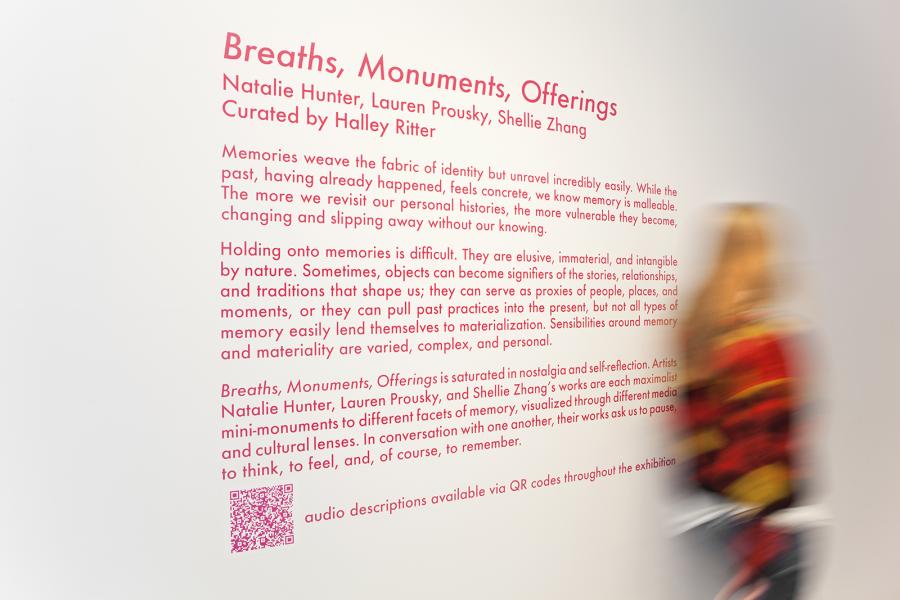
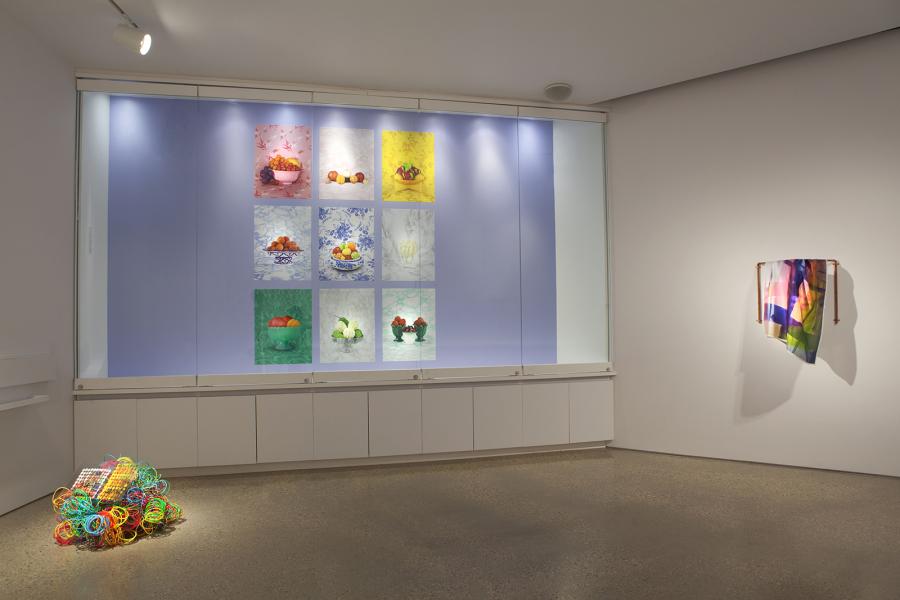
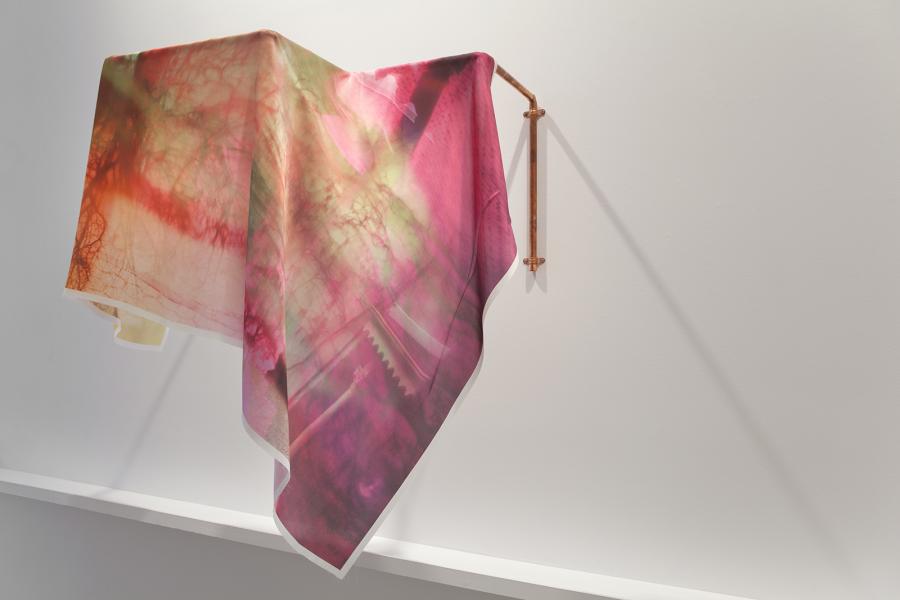
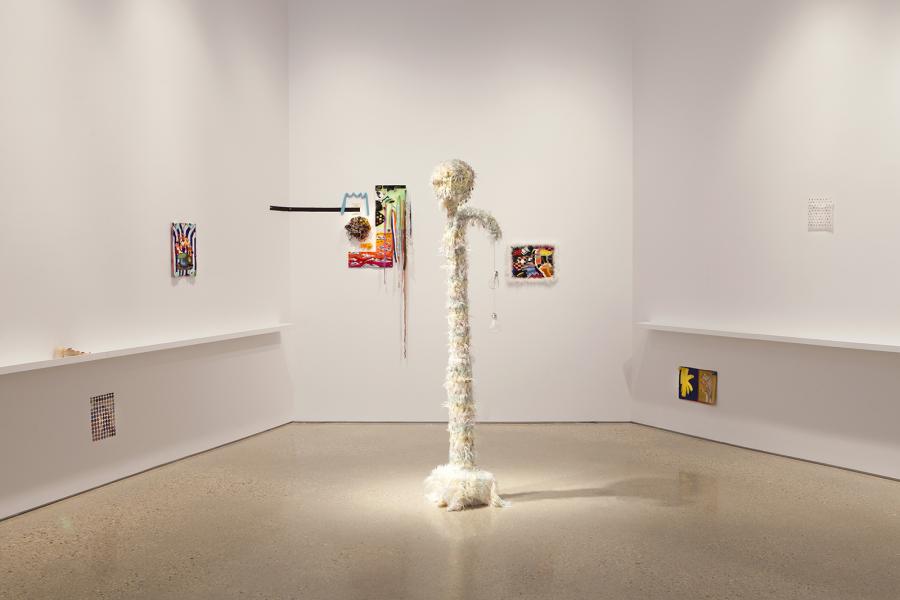
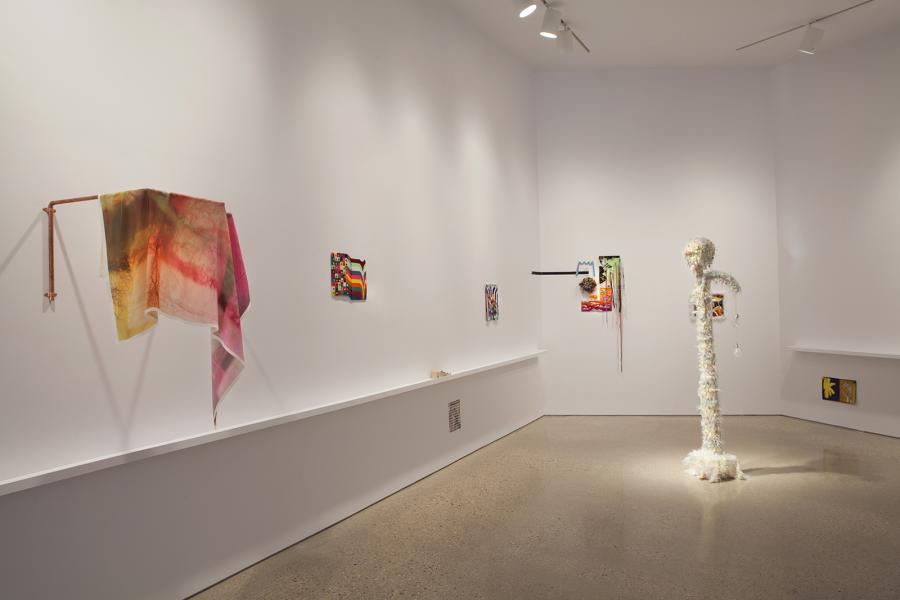
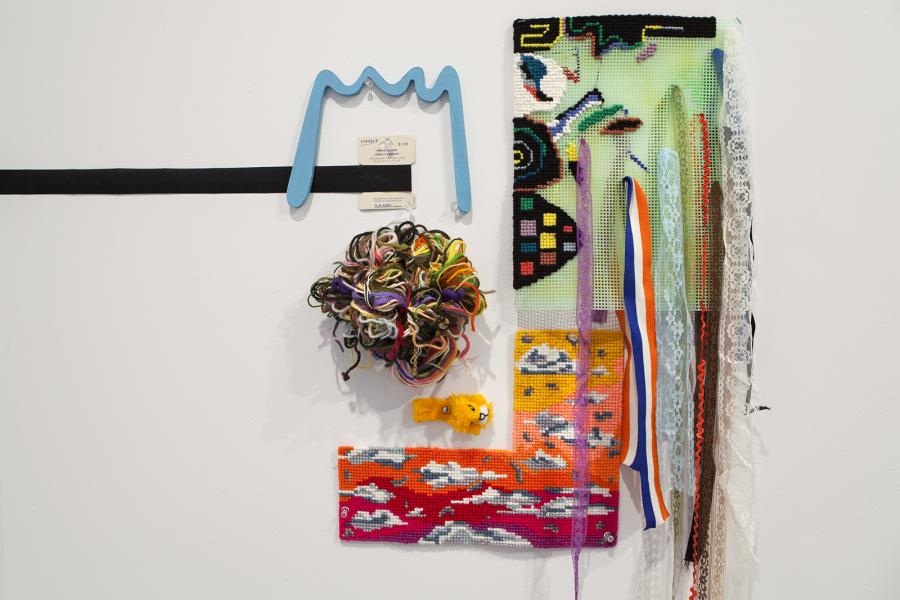
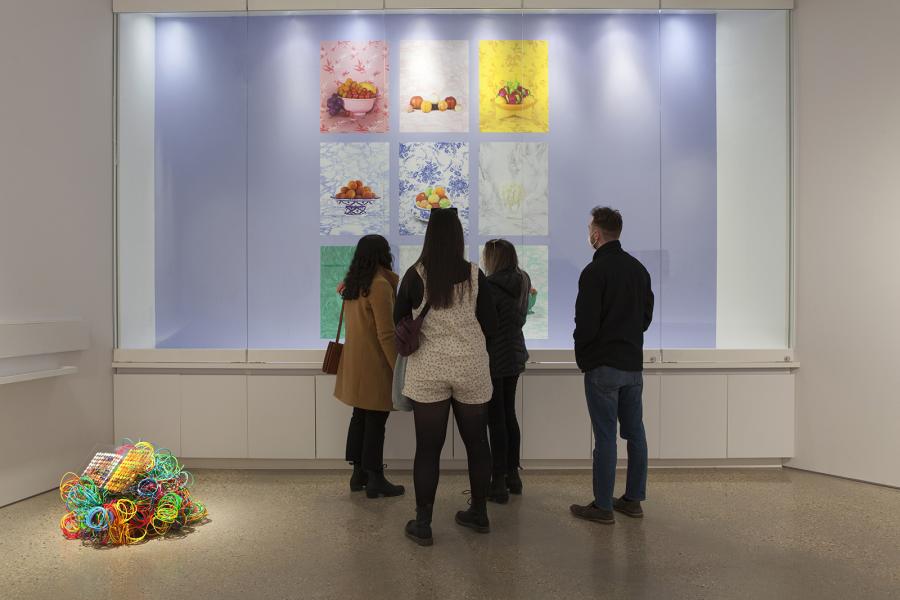
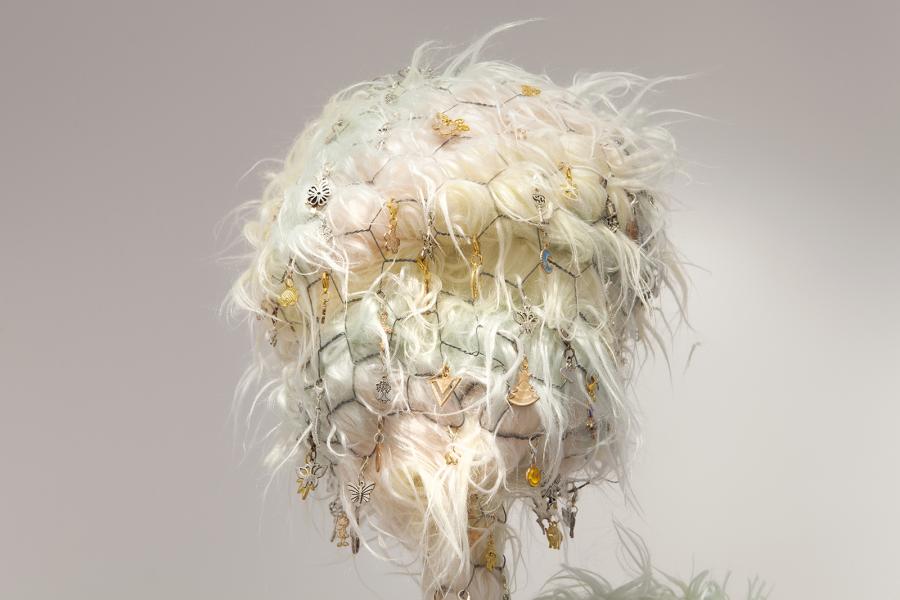
Photo Documentation by Karen Asher
